14 Black Inventors You Probably Didn’t Know About
Many people have read the story of how George Washington Carver invented peanut butter. Others are familiar with the story of Sarah Breedlove, aka Madam C. J. Walker, the inventor of beauty products and the first woman to become a self-made millionaire in America. And thanks to the Academy Award nominated film, Hidden Figures, we’re now all familiar with the amazing contributions of Katherine Johnson, Dorothy Vaughan, and Mary Jackson.
But, did you know that many of the products we use every day were created by black people? Here’s a list of 14 of them that, until now, you probably didn’t know about.
Dr. Shirley Jackson
Dr. Shirley Jackson is an American physicist who received her Ph.D. from the Massachusetts Institute of Technology in 1973. She was the first African-American woman to earn a doctorate in nuclear physics at MIT. In addition to her lengthy list of academic achievements, she also has an impressive number of inventions under her belt.
Her experiments with theoretical physics paved the way for numerous developments in the telecommunication space including the touch-tone telephone, the portable fax, caller ID, call waiting, and the fiber-optic cable.
Today, Dr. Shirley Jackson is the 18th president of Rensselaer Polytechnic Institute in Troy, New York.
Lewis Latimer
Inventor and engineer Lewis Latimer was born in Chelsea, Massachusetts, on September 4, 1848. He collaborated with science greats Hiram Maxim and Thomas Edison.
One of Latimer’s greatest inventions was the carbon filament, a vital component of the light bulb. His inventions didn’t stop there, working with Alexander Graham Bell, Latimer helped draft the patent for Bell’s design of the telephone. This genius also designed an improved railroad car bathroom and an early air conditioning unit. So the next time you’re escaping a hot day inside your cool house, don’t forget to thank Lewis Latimer.
Marie Van Brittan Brown
Did you know that the first home security system was invented by a Black nurse? Meet Marie Van Brittan Brown. Although she was a full-time nurse, she recognized the security threats to her home and devised a system that would alert her of strangers at her door and contact relevant authorities as quickly as possible.
Her original invention consisted of peepholes, a camera, monitors, and a two-way microphone. The finishing touch was an alarm button that, when pressed, would immediately contact the police. Her patent laid the groundwork for the modern closed-circuit television system that is widely used for surveillance, home security systems, push-button alarm triggers, crime prevention, and traffic monitoring.
Otis Boykin
Otis Boykin’s most notable contribution to science was likely the circuit improvements he made to pacemakers after losing his mother to heart failure — a contribution that has saved countless lives since. But this single improvement was among a long list of achievements.
Boykin had 26 patents in his name and is famed for the development of IBM computers, burglar-proof cash register, chemical air filters, and an electronic resistor used in controlled missiles and other devices.
Lonnie G. Johnson
Did you ever enjoy water gun fights as a kid? Well, meet Lonnie Johnson, the man that gave us the most famous water gun — the Super Soaker. Lonnie wasn’t a toymaker, he was actually an Aerospace Engineer for NASA with a resume boasting a stint with the US Air Force, work on the Galileo Jupiter probe and Mars Observer project, and more than 40 patents.
Yes, he is also working on the Johnson Thermoelectric Energy Converter (JTEC) which converts heat directly into electricity — but it’s the squirt gun he created that has given us all the most joy.
Charles Drew
Every two seconds someone in the U.S. needs blood. Thanks to Charles Drew, that blood is available. Drew was a physician, surgeon, and medical researcher who worked with a team at Red Cross on groundbreaking discoveries around blood transfusions. In World War II, he played a major role in developing the first large-scale blood banks and blood plasma programs.
He also invented the, and get ready because this name is pretty charming — bloodmobiles. These are the refrigerated trucks that, to this day, safely transport stored blood to the location where it is needed most.
Drew was one of the most prominent doctors working in his field, and one of the only African-Americans, during a time when blood donation was still separated along lines of race. Drew eventually resigned from his position with the American Red Cross over their insistence on adhering to this policy. It was 1950 before the Red Cross finally recognized all blood as being equal.
Marian R. Croak
In 2013, Marian Croak was inducted into Women in Technology International’s hall of fame, a move that recognizes her remarkable achievements in tech. Croak holds over 135 patents, primarily in voice-over Internet protocol (VoIP), some in other areas. She has another 100 patents currently under review.
Today, Marian is an SVP at AT&T, serves as a mentor for women in AT&T labs, and sits on the board for the Holocaust, Genocide and Human Rights Education Center.
Lisa Gelobter
If you ever enjoyed an animated Gif on the web, like this one amazing clip of a kitten being scared by an iguana, then you have Lisa Gelobter to thank.
Gelobter was integrally involved with the advent of Shockwave, a technology that formed the beginning of web animation. She also played a major role in the emergency of online video, later serving on the senior management team at Hulu.
Previously, Lisa was the Interim Head of Digital for BET Networks and ran Technology, Product and Business Operations. Today, you can catch Lisa at the White House, in the United States Digital Service. She is currently serving as the Chief Digital Service Officer with the US Department of Education.
Philip Emeagwali
Due to cost, Philip Emeagwali was forced to drop out of school at age 14. But this didn’t stop him from becoming one of the greatest computer pioneers of our time. In fact, he’s often called “The Bill Gates of Africa.”
As an adult, Emeagwali began studying nature, specifically bees. The construction of the honeycombed inspired him to rethink computer processing. In 1989, he put this idea to work, using 65,000 processes to invent the world’s first super computer — able to perform 3.1 billion calculations per second.
Jesse Ernest Wilkins, Jr.
Jesse Ernest Wilkins, Jr. is one of America’s most important contemporary mathematicians. At 13, he became the University of Chicago’s youngest student. Wilkins continued his studies there, earning bachelor, master, and eventually earning his doctorate degree in mathematics at the age of 19.
He’s published papers in mathematics, optics, and nuclear engineering. As a mathematician for the American Optical Company in Buffalo, N.Y., he perfected lens design for microscopes and ophthalmologic uses. His greatest contribution to scholarship was the development of mathematical models to explain gamma radiation and his work on developing a shielding against gamma radiation.
His other claim to fame came from working on the Manhattan Project. At the Manhattan Project, Wilkins worked with future Nobel laureate Eugene Wigner and made significant contributions to nuclear-reactor physics, now known as the Wilkins effect and the Wigner-Wilkins spectrum.
Elijah McCoy
Often regarded as one of the most famous black inventors ever, McCoy was credited for 50 inventions over the span of his career.
In an effort to improve efficiency and eliminate the frequent stopping necessary for lubrication of trains, McCoy devised a method of automating the task. In 1872 he developed a “lubricating cup” that could automatically drip oil when and where needed — vital in avoiding sticking to the track. The lubricating cup met with enormous success and orders for it came in from railroad companies all over the country. It was so popular that when other inventors attempted to steal his idea and sell their own versions of the device, companies were not fooled. They insisted on the authentic device, calling it “the Real McCoy.”
Garrett Morgan
Those who survived either of the World Wars thanks to a gas mask have Garrett Morgan to thank. Morgan first created the “safety hood” to help firefighters navigate smokey buildings, later modifying it to carry its own air supply— making it the world’s first effective gas masks.
He also had the good sense to add a third position to the traffic signal — yes, there was a time when traffic signals just said indicated “stop” or “go” — an addition that further reduced automobile accidents.
Mary and Mildred Davidson
Mary and her sister Mildred patented many practical inventions. They didn’t have technical education, but they were both exceptional at spotting ways to make peoples’ lives better. Together, they invented the sanitary belt. Later, Mary invented the moisture-resistant pocket for the belt. While disabled from multiple sclerosis, Mary went on to invent the walker and the toilet-tissue holder.


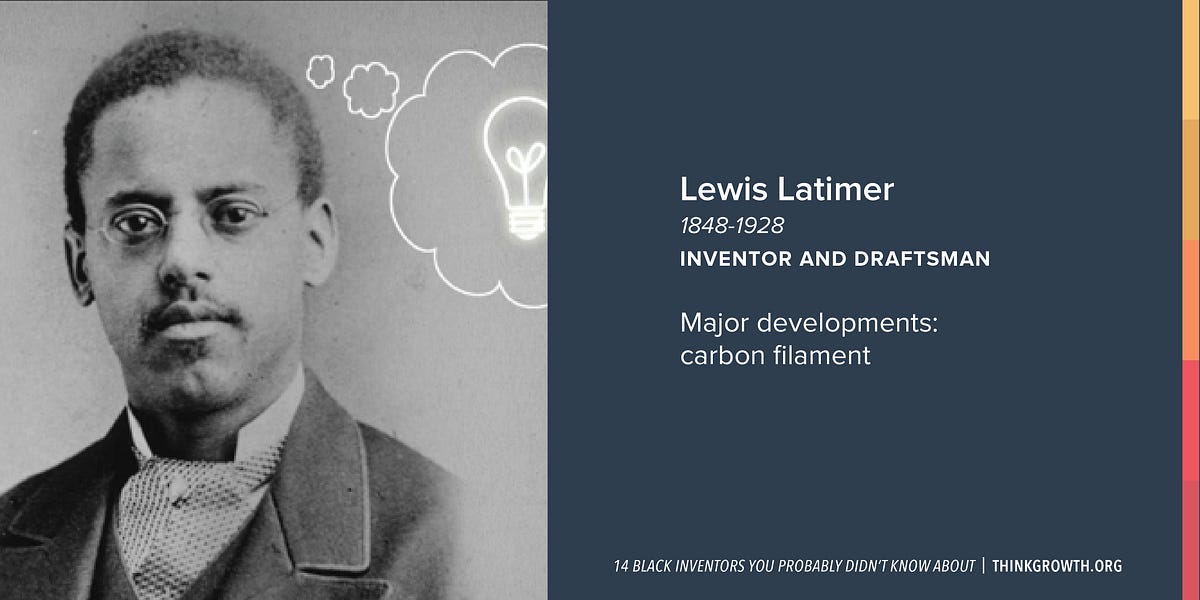

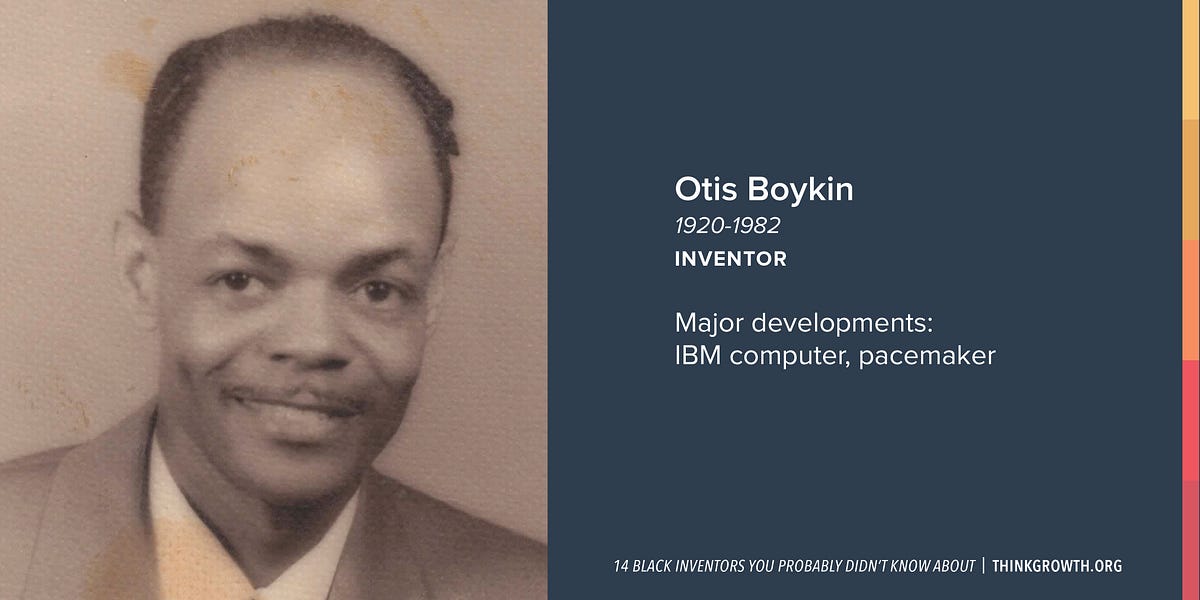


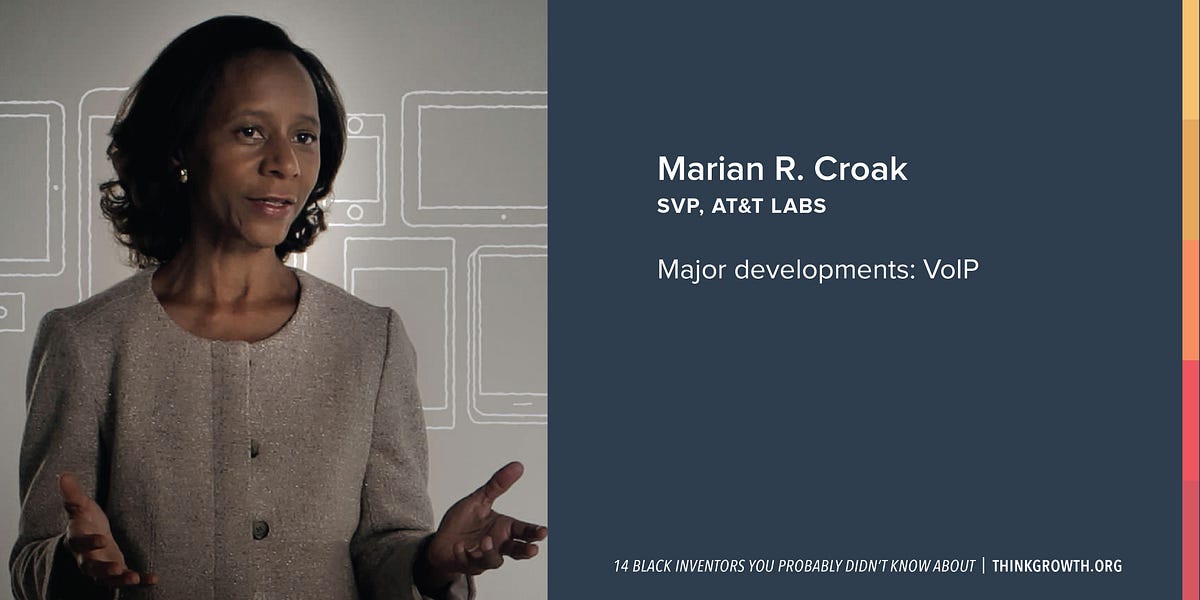

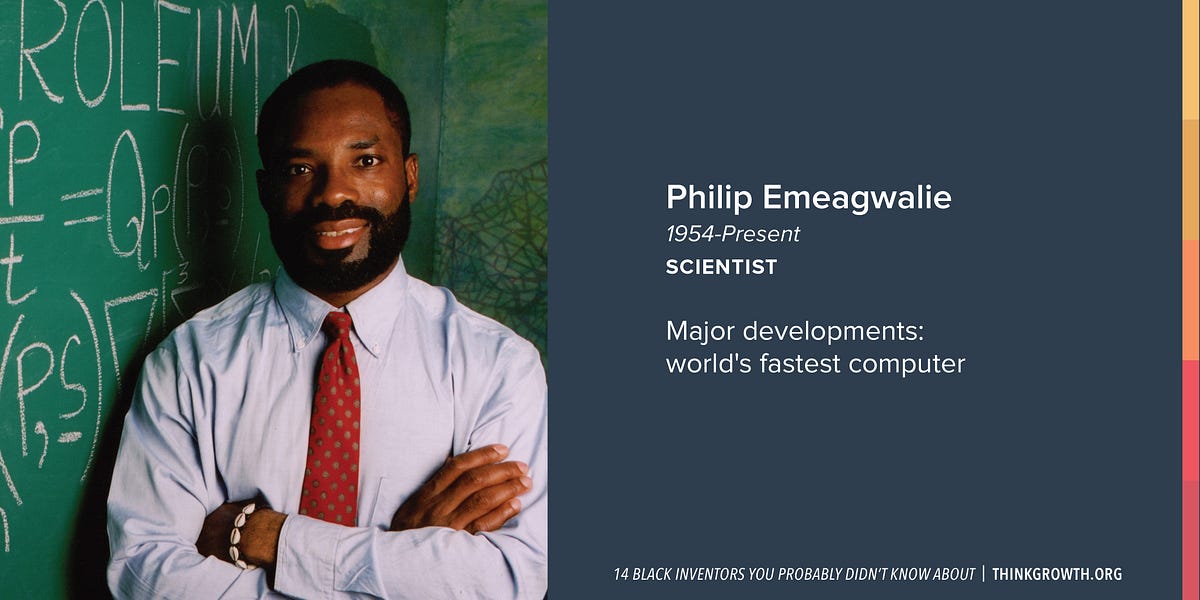
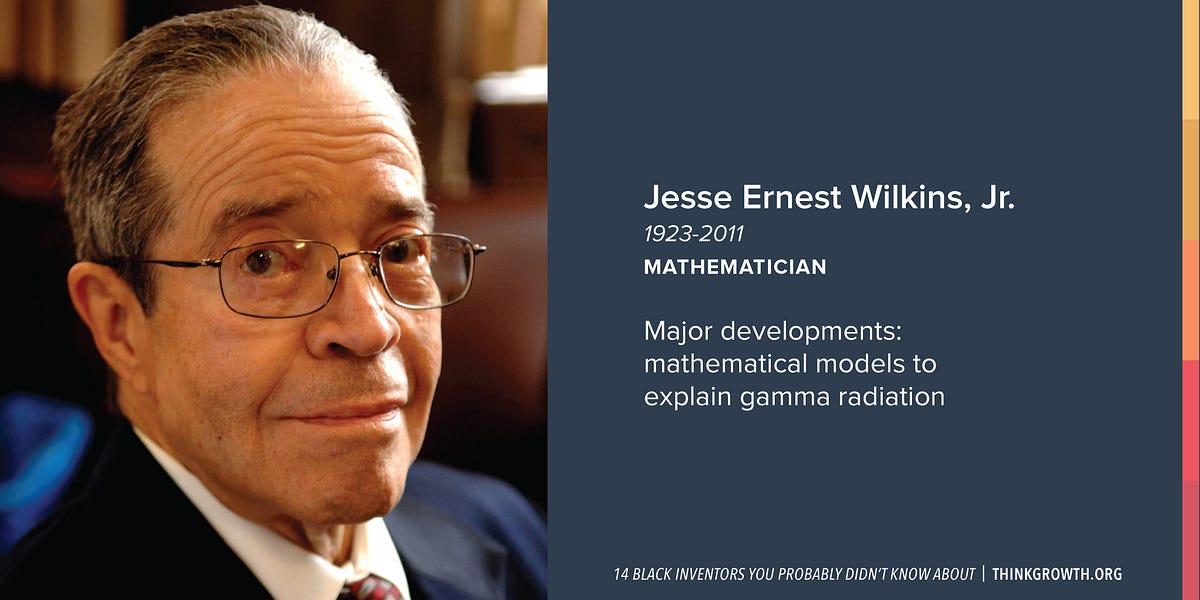

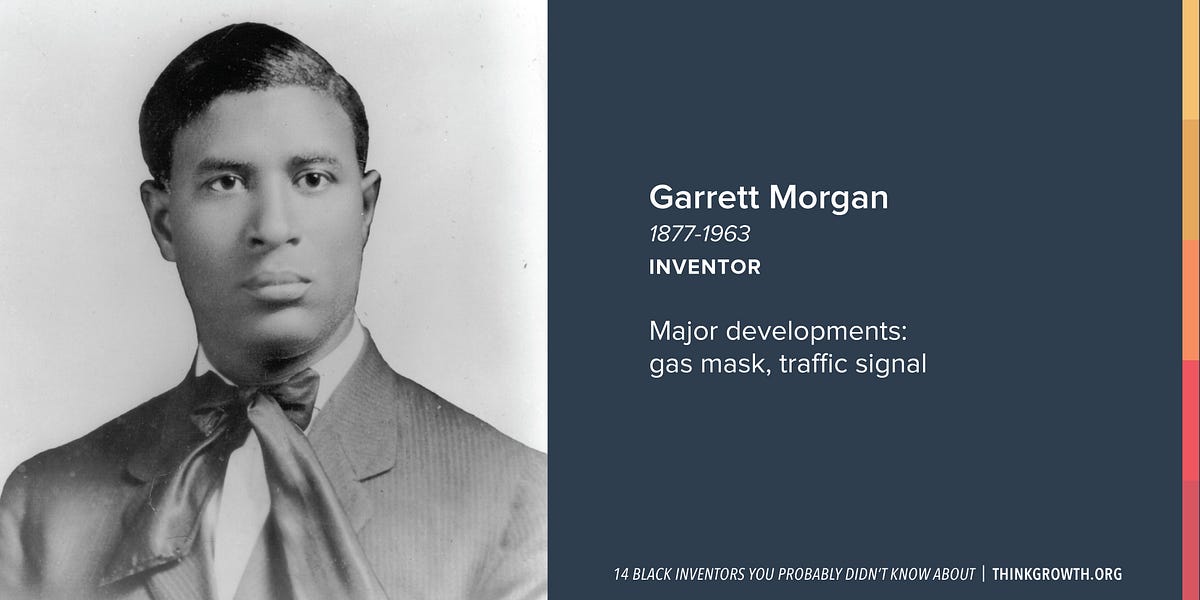
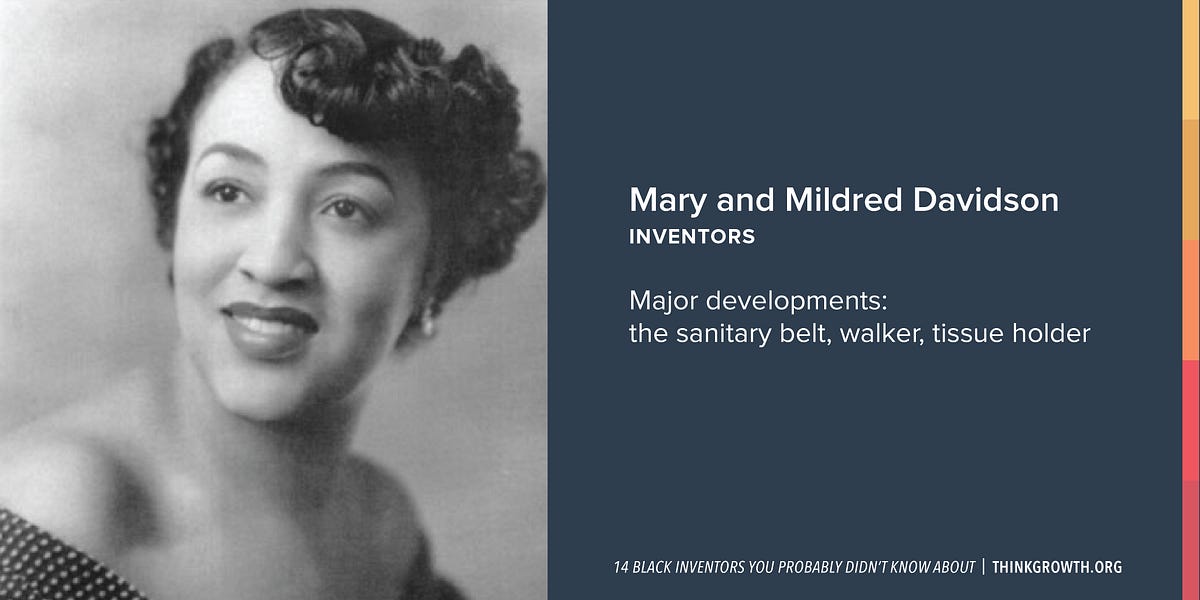
No comments:
Post a Comment